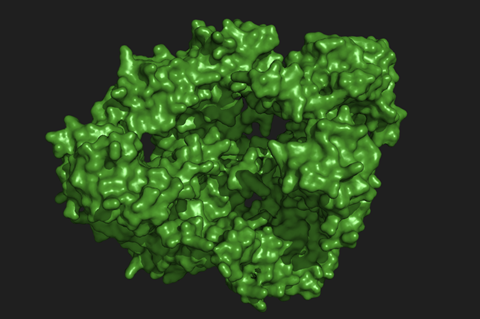The team that first discovered the CRISPR loci has now developed a new genome engineering tool that tackles some of the limitations of the most popular CRISPR-based tools.
Professor Francis Mojica, who is credited as the first researcher to characterize the CRISPR locus, said his team at the University of Alicante had aimed to solve a number of well known problems, such as the immune response some tools may induce in eukaryotic cells, restrictions associated with cell delivery of large DNA fragments (ie, Cas9 and RNA guide encoding sequences) and the limited range of potential targets as determined by the requirement of large sequence motifs (PAMs) flanking the target.

“We were trying to overcome these limitations by looking for smaller Cas nucleases that require short, frequently occurring PAMs in natural environments,” he said.
Novel tool
In collaboration with the National Centre for Biotechnology (CSIC, Madrid), the team has now developed a novel CRISPR-based tool for programmable cleavage of specific DNA sequences that works for genome engineering in prokaryotic and eukaryotic cells, expanding the CRISPR catalogue with new strategies and potentially improving the existing ones.
The work is outlined in ‘Identification of the EH CRISPR-Cas9 system on a metagenome and its application to genome engineering’, which has recently been accepted by Microbial Biotechnology, an Applied Microbiology International publication.
The team discovered a CRISPR-cas locus (EH CRISPR-cas9) encoding a relatively small Cas9 nuclease that substantially differs from previously reported homologs (< 68% amino acid identity).
Virus-enriched water
“We identified the locus in a metagenome dataset we generated from a virus-enriched water sample we collected from a natural environment - El Hondo Natural Park, near the University of Alicante - which hints at its bacteriophage origin,” Professor Mojica said.
“Given the sequence novelty and small size of EHCas9, we selected the EH CRISPR-Cas9 system for in vitro biochemical analysis and developed a derivative tool that has been successfully applied to genome editing in the tested eukaryotic (a mouse cell line) and prokaryotic (Escherichia coli) cells where it has shown outstanding performance as a counter-selection system (100% efficiency) of bacteria containing a target sequence in an essential replicon.”
The smaller size of the EHCas9 protein and the requirement for a short PAM circumvents some of the limitations of most Cas9-based tools, facilitating cell delivery and target eligibility, Professor Mojica said.
Bacterial killer agent
“Moreover, its high performance as a bacterial killer agent is promising for the implementation of sequence-specific antibacterial devices. Furthermore, its probable non-pathogenic origin makes it unlikely to induce an immune response in human hosts for gene therapy applications,” he added.
Professor Mojica says the next step will be to explore if, and to characterize to what extent, the tool induces an immune response against its constituents in eukaryotes, including human cells.
“It would be of interest to further optimize the PAM requirement - ideally, generating a PAMless protein - and improve editing activity of the EHCas9 tool in eukaryotic cells. This could be explored by designing different guide RNAs, mutating EHCas9 protein, either randomly or directed to specific amino acids, and/or generating chimeric EHCas9 proteins, replacing native domains with equivalent domains of diverse orthologs,” he said.
Next steps
To build on this work, the performance of native and engineered EH-Cas9 tools for genome editing needs to be tested in additional targets and eukaryotes, including plant and other animal cells, both in vitro and in vivo.
The next stage would be to implement EHCas9-derivative tools optimized for other applications such as molecular diagnosis, antibacterial agents, base editing, prime editing, or transcriptional regulation, among others that have been developed with Cas9 proteins, and to explore RNA-independent DNA cleavage activity or nuclease activity on ssDNA, RNA, DNA:RNA hybrid targets.
The team will also assess EHCas9 targeting specificity and editing fidelity through in vitro off-target cleavage and in vivo genome-wide mutation analyses.
The study was led by Dr L. Montoliu (experiments with eukaryotic cells carried out at the National Centre for Biotechnology) and Dr FJM Mojica (the rest of experiments, carried out at the University of Alicante) and financially supported by Generalitat Valenciana and Ministerio de Ciencia e Innovación (Spain).
‘Identification of the EH CRISPR-Cas9 system on a metagenome and its application to genome engineering’, appears in Microbial Biotechnology.







No comments yet